The capital of Greece, Athens (Greek: Αθήνα), is one of the oldest cities in the world, having been continuously inhabited for at least 7000 years. It offers all the trappings you’d expect from an ancient city, plus some impressive archaeological and historic sites and museums.
I always wanted to visit Greece, a historical country per excellence; I decided to travel to Athens with my brother for couple days. People from around the world travel Greece for the famous Santorini or to Mykonos, and the Mediterranean atmosphere. Are you planning to visit Athens, the capital of Greece? Here the best thing to do in Athens : Use this to help plan your trip easily so you don’t miss any of the best things to do in Athens Greece!
We took the bus from the airport directly to the center of Athens for 5.50€/each person. We had to walk for 5–10 min to get to our airbnb (300€ for 10 days) in the center of Athens. After dropping our stuff, we went for a walk so we could get some background info about the neighbour.
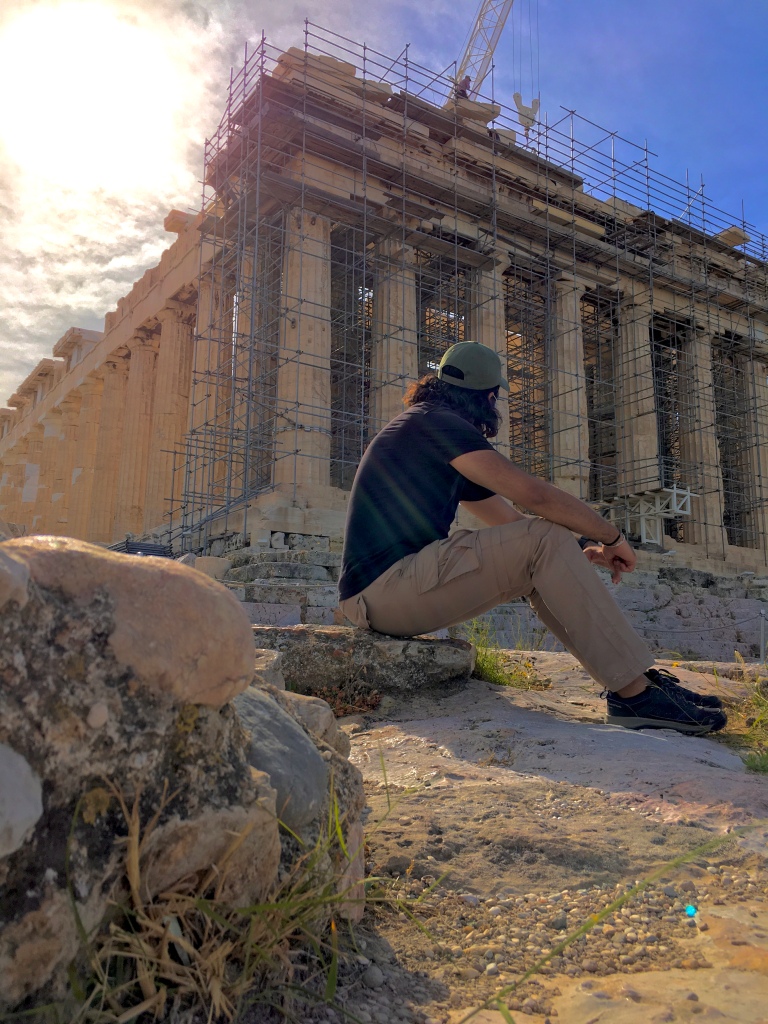 Acropolis Ticket Cost: €20 April 1 to October 31; €10 November 1 to March 31
Acropolis Ticket Cost: €20 April 1 to October 31; €10 November 1 to March 313. Hike Mount Lycabettus
One of my favorite areas of Athens is Lycabettus Hill. It’s an easy, 15-minute walk from Syntagma Square and offers amazing views of both Athens and Mount Lycabettus. To get there, you can take a city bus or taxi up for about 2 Euros. The path is paved and well lit at night, but it can be busy on weekends as it offers one of best views of Acropolis. The steps up offer great exercise and you’ll be rewarded with fantastic views once you reach the top!
So, if you enjoy some exercise and a great view of the city with a colourful sunset, Mount Lycabettus is the right spot for you. Standing 277 meters above sea level, Lycabettus Hill is the highest point of Athens. There is no fee for the entrance, its Free. This spot must be in your Athens travel guide.
 Getting Here: Unless you take a taxi right to the Lycabettus Cable Car station, expect to do some walking, and a lot of that will be uphill. The closest metro stops are Panepistimio and Evangelismos. From here, it will be an uphill walk to the cable car station. Or, you can choose to walk all of the way to the top on a paved trail that switchbacks its way up the hill. It’s about a 15-minute walk up this paved trail to the summit.
Getting Here: Unless you take a taxi right to the Lycabettus Cable Car station, expect to do some walking, and a lot of that will be uphill. The closest metro stops are Panepistimio and Evangelismos. From here, it will be an uphill walk to the cable car station. Or, you can choose to walk all of the way to the top on a paved trail that switchbacks its way up the hill. It’s about a 15-minute walk up this paved trail to the summit.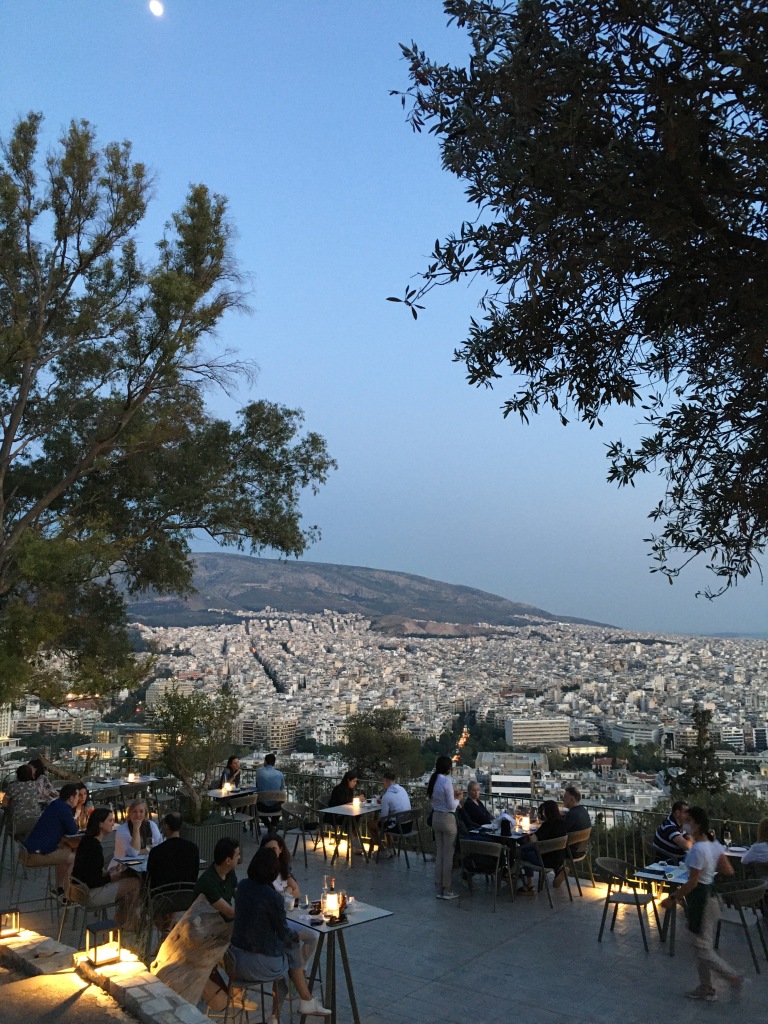
4. Explore the beaches on the south coast
Rent a car and drive the south coast, there are plenty of beaches were you can swim, relax and enjoy amazing sunset. The south coast is the best plan if you have more time and want to escape the city; most of the beaches on the south coast are good for swimming. I recommend you Sounion beach, vouliagmeni beach, and bolivar beach.
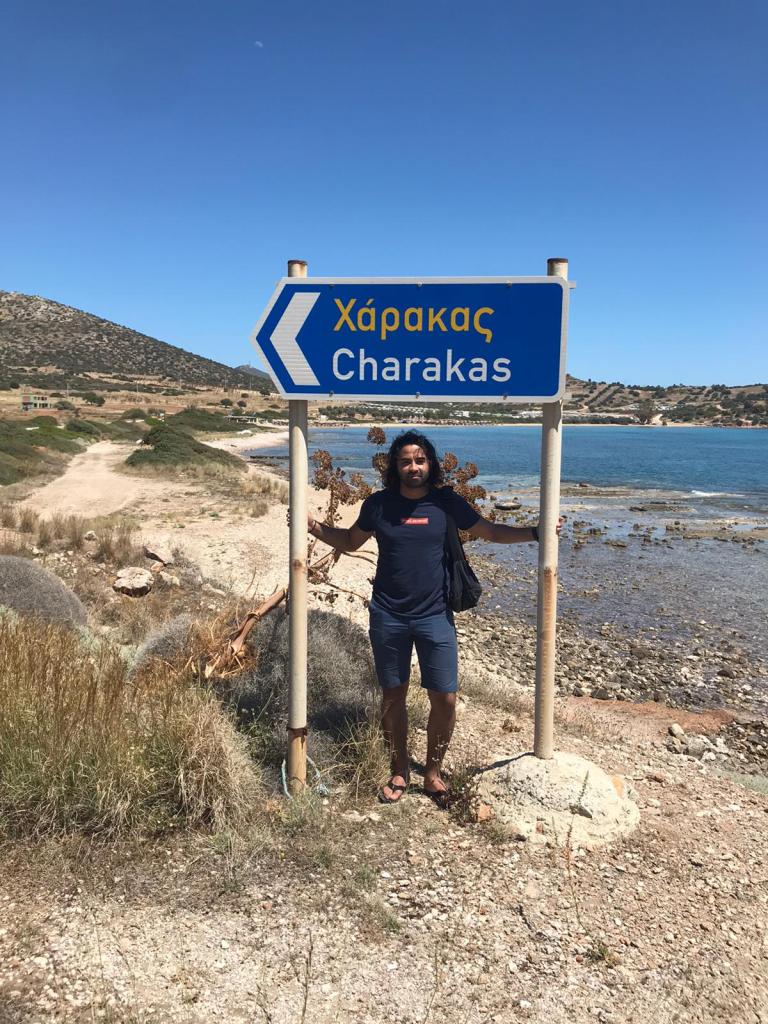
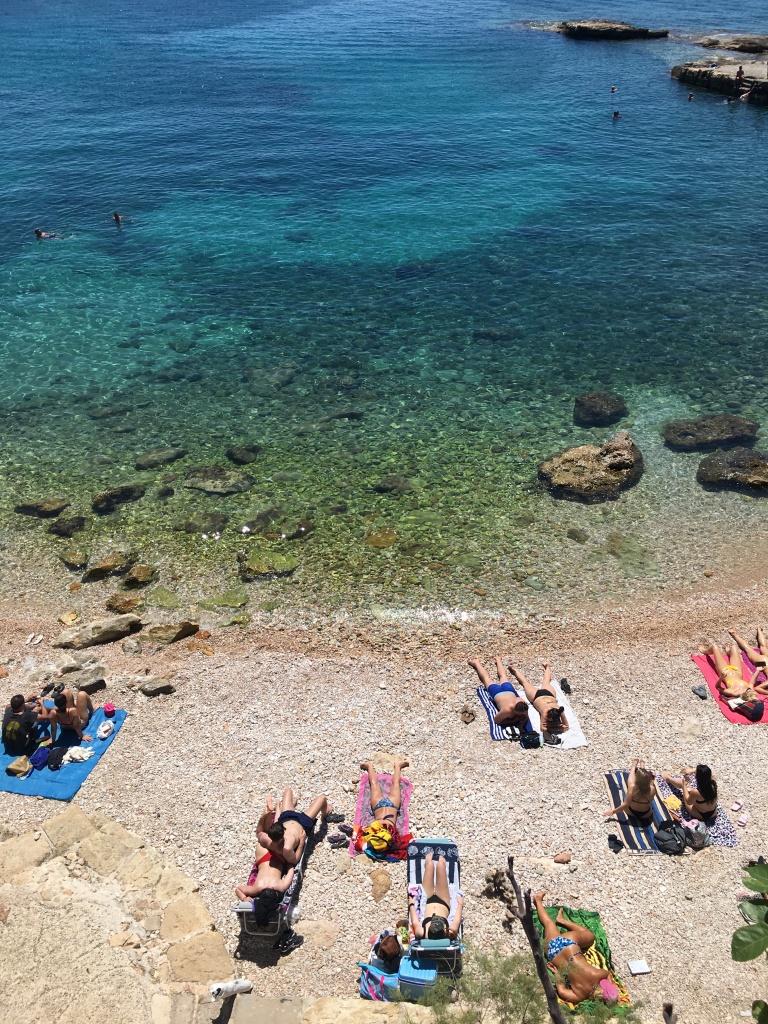
Other Things to See and Do in Athens
Visit the Temple of Poseidon at Cape Sounion

If you only have time for one thing, make it Sounion Cape. The Greek gods were said to meet here during times of peace, which explains why Poseidon’s sanctuary was erected on an island and not mainland Greece. In addition to its mythological significance, Sounion is also home to some of Greece’s most stunning beaches and swimming spots. If your travel dates fall between June 1 and September 30, you’ll likely be able to enjoy some phenomenal snorkeling in addition to sunbathing.
The Temple of Poseidon is a wonderfully preserved, constructed in 444BCE. It takes an hour from Athens to get to the site. The admission fee is 10€. You can enjoy an incredible sunset. Also you can visit some nice beaches near the temple of Poseidon such as Legrena.
Visit the Acropolis Museum
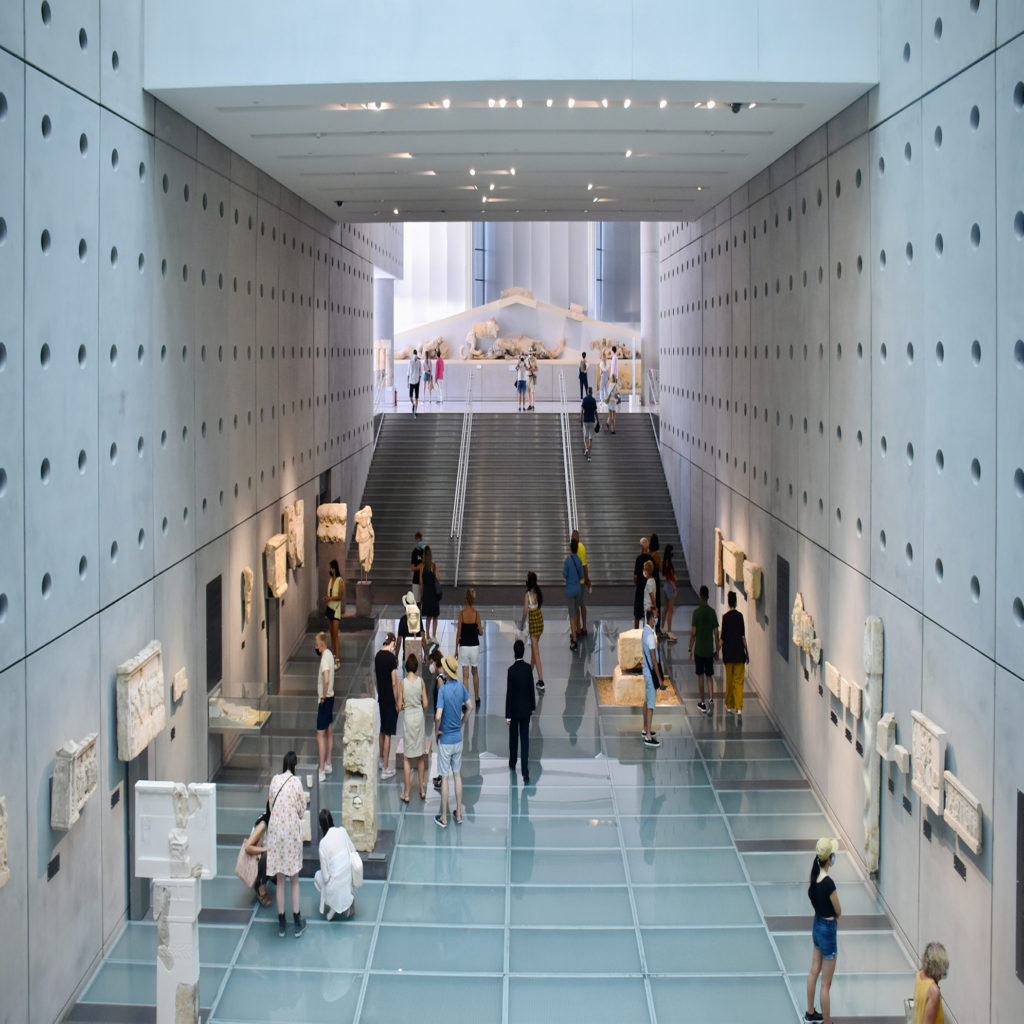
The Acropolis Museum has been rated as one of the best museums in the world. It is recommended to start the visit of the museum from the top floor and make your way down.
Cost: €15 April 1 to October 31; €10 November 1 to March 31
Hours: The Acropolis Museum is open daily. Hours vary by season. From April 1 to October 31, the museum opens at 9 am and closes between 5 pm and 10 pm, depending on the day of the week.
Website: For updated hours, pricing, and holidays, and to purchase your tickets in advance, visit the official website.
Visit the Agora-Athens Central Market
Get the opportunity to visit the Ancient Agora of Athens which is situated between Monastiraki and the Acropolis. Come early to discover the secrets of Greek gastronomic tradition, like halloumi, feta, olives and many more.
Ancient Agora of Athens
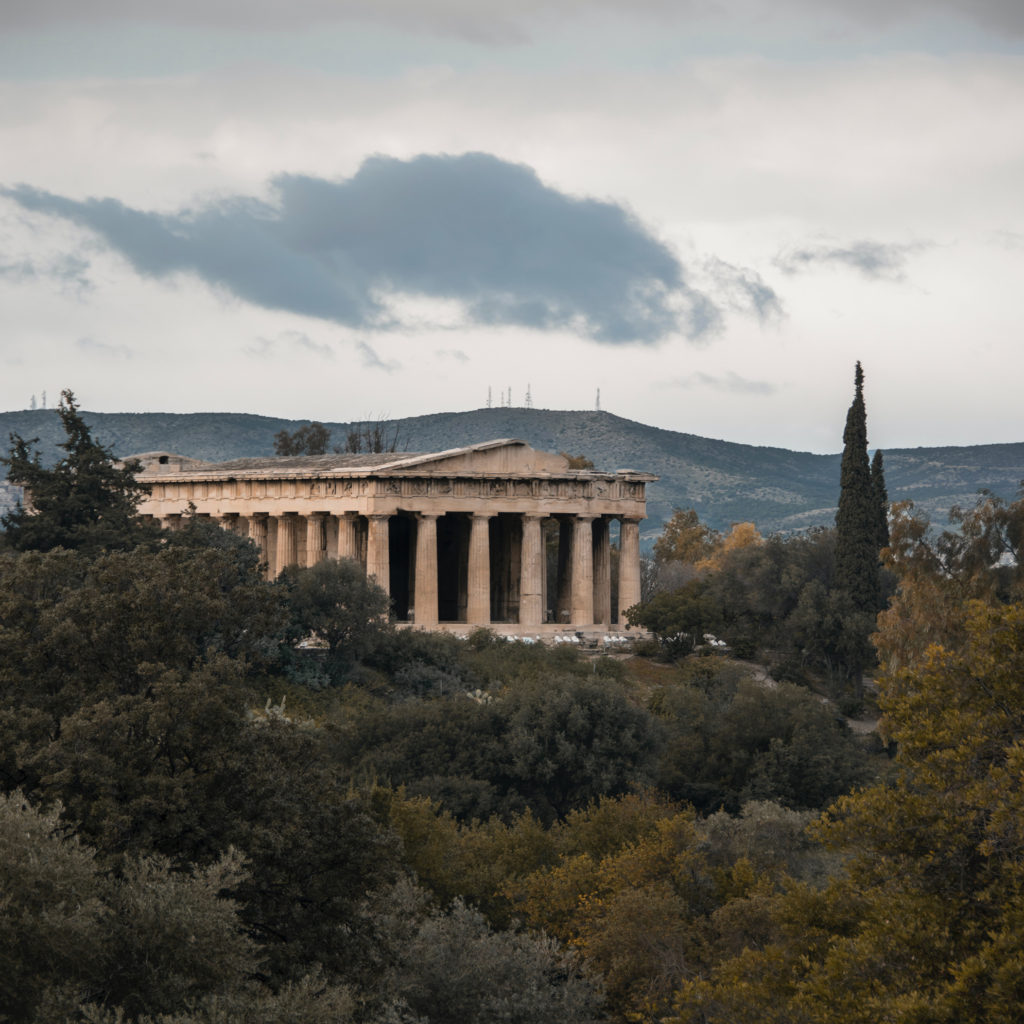
The Ancient Agora of Athens, one of three ancient city agoras in Greece, is located directly south of Syntagma Square in downtown Athens. The entire surrounding area, which is commonly called The Plaka, is now a pedestrian zone. The modern Athinas street was built in place of Themistocles wall and extends from Pandrossou Street until Capodistrias Street. It corresponds today to a length of 10 kilometers or 6 miles and contains 100 streets. The street names honor famous Greeks (both contemporary and historic) such as Aeschylus, Aristotle, Euripides and Sophocles in addition to ancient cities like Corinth and Epidaurus.
The Temple of Olympian Zeus
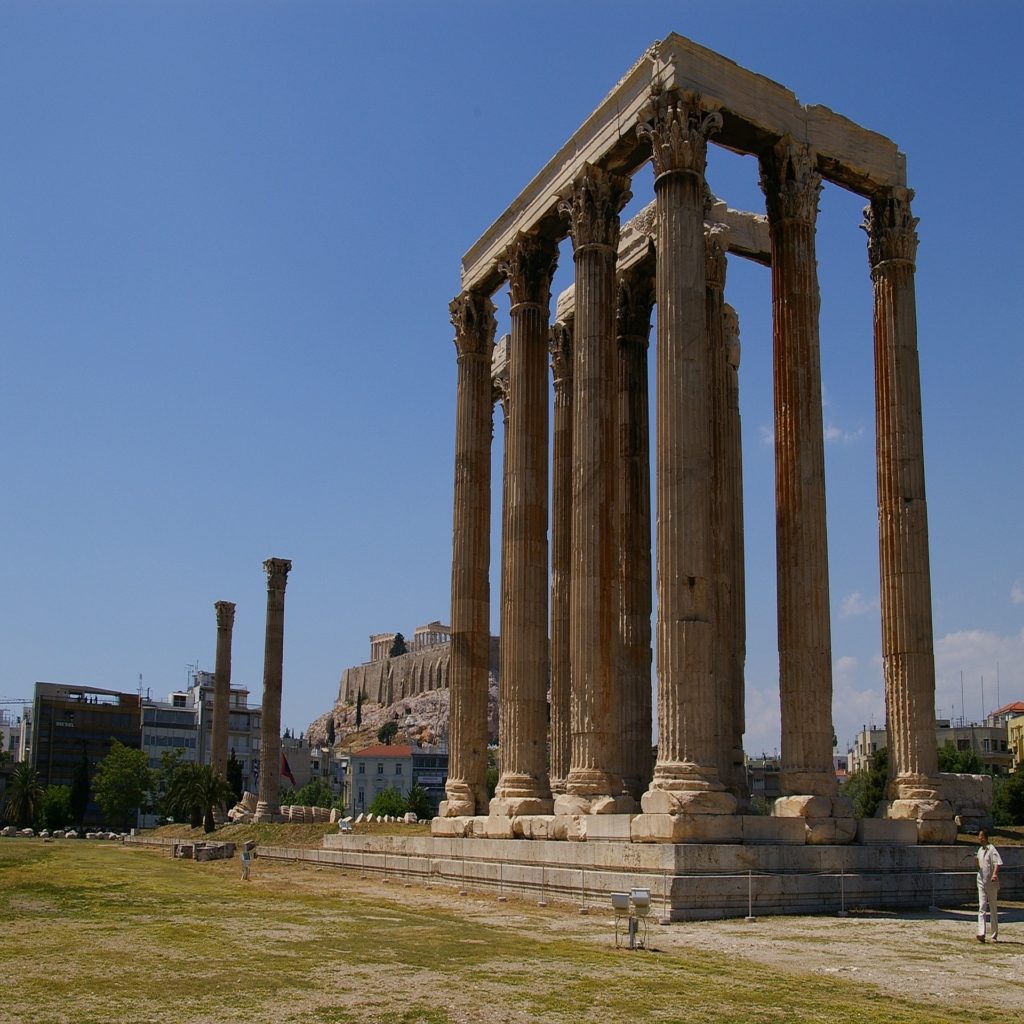
This massive temple is, not surprisingly, dedicated to Zeus. Construction began in 520 B.C., and it wasn’t finished until more than 100 years later. In fact, no one was quite sure how big it should be, so they just kept building until everyone was happy with what they had created! Today, all that remains of Temple of Olympian Zeus is a few columns and some steps leading up to them. It’s impressive nonetheless; don’t miss your chance to explore it during your next trip to Athens.
National Archaeological Museum of Athens
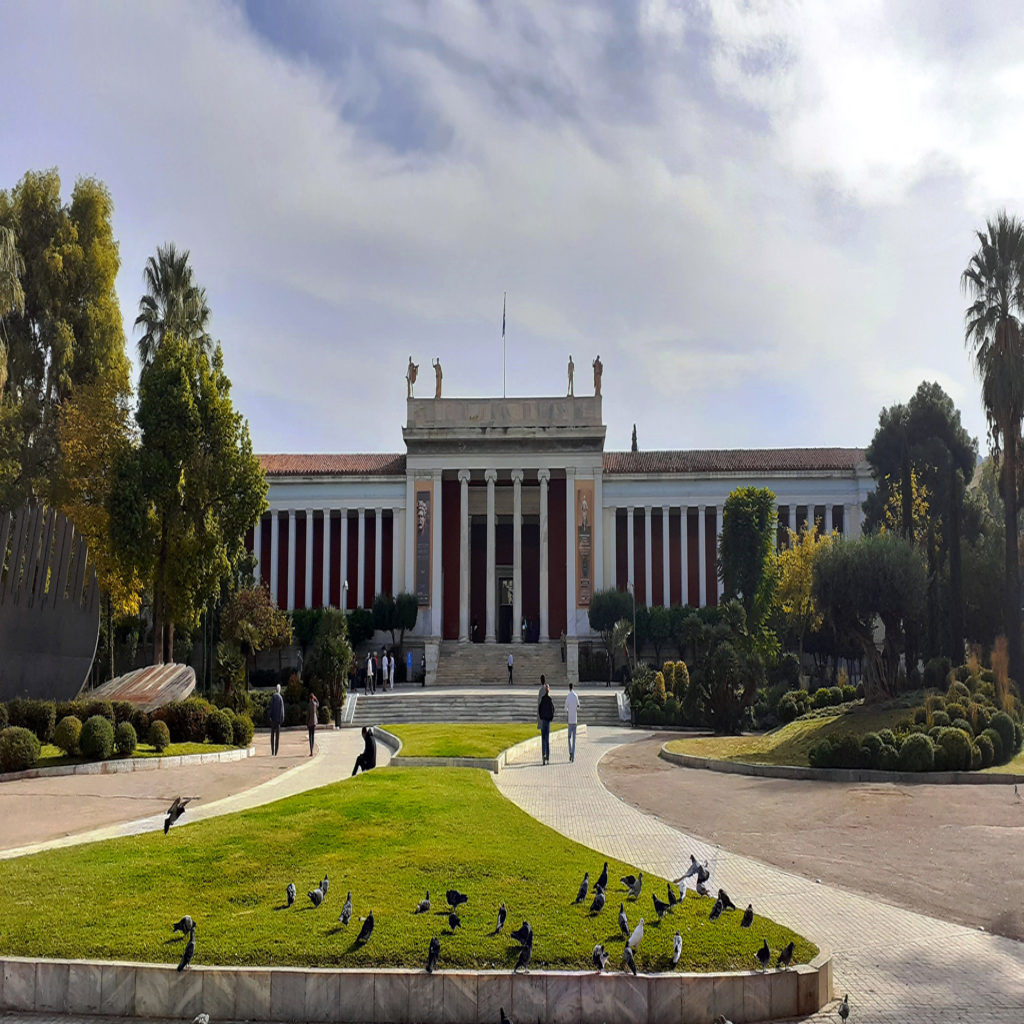
The National Archaeological Museum of Athens (Greek: Εθνικό Αρχαιολογικό Μουσείο, Ethnikó Archaiologikó Mouseío) is an archaeological museum in Athens, Greece. It was founded by royal charter on May 10, 1829. Its first curator was Adamantios Korais. The museum initially focused on relics from Athenian and Greek history from around 700 BC to AD 300, including some objects from excavations at Troy. By 1865 it had moved into its present building on Syngrou Avenue; its interior has been altered more than once since then.[2]
Hadrian’s Library, Roman Forum and Odeon
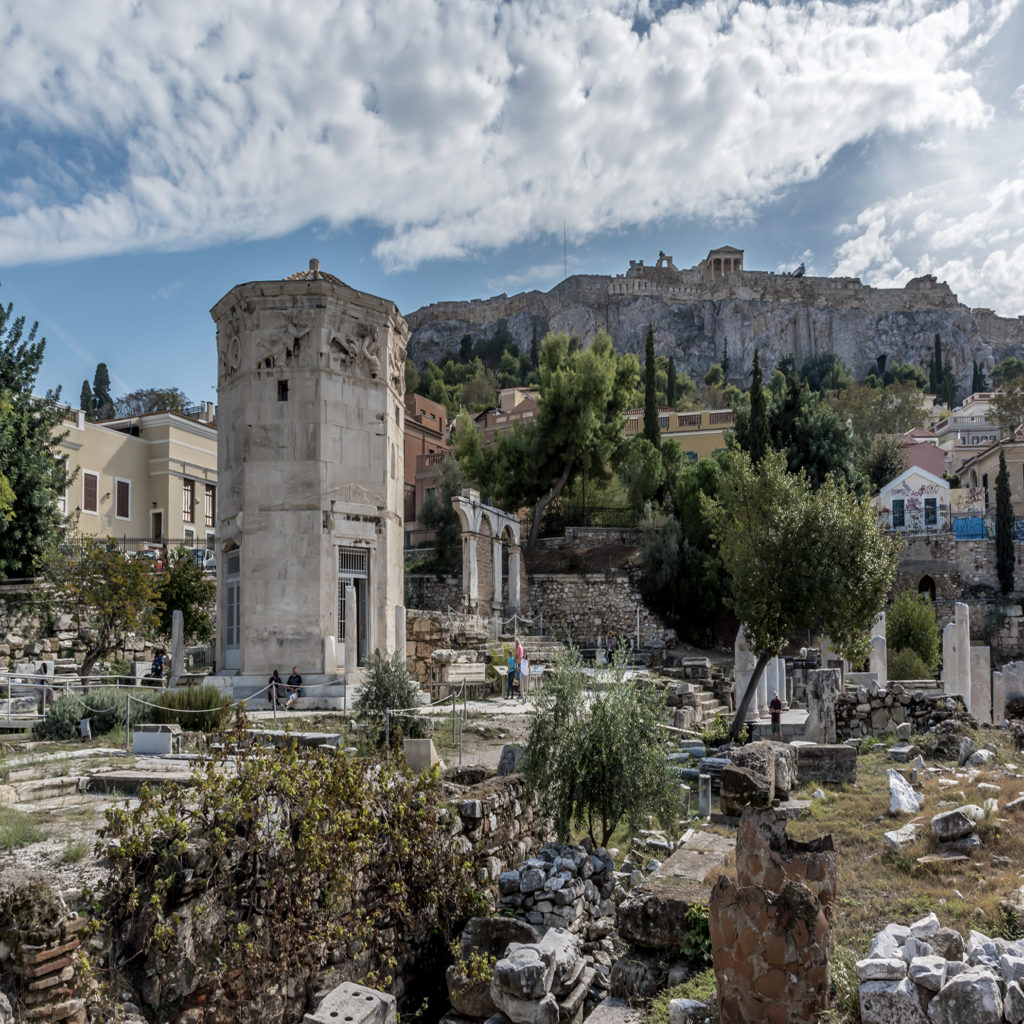
Skip museums and historical sites when in Athens. Instead, head straight for Hadrian’s Library. The Roman Forum was added in 86 AD by emperor Domitian and even though it is just ruins, it will give you a great feel for what ancient Rome was like. The Odeon dates back to 160 BC and is one of only 5 left in Greece. Even with some careful restoration, these ruins still have a very authentic feeling that you won’t get at any museum. When most people think of traveling to Greece they think of walking around ancient ruins so be sure not miss out on these three must-see landmarks while there! Be sure to check out TripAdvisor reviews before booking your flight – those travelers know their stuff!
Kerameikos – cemetery, tombs and ancient baths
The Kerameikos was an ancient cemetery, containing many impressive tombs and funerary monuments. The site is on Pireos Street in central Athens , although most of it lies beneath modern buildings. The complex dates from 2700 BC to 300 AD, with an interruption during Roman times. The large tumulus tomb at the center of site is that of Aristion, one of many Athenians buried here as they were denied access to other public cemeteries following changes in burial law due to pestilence in 430 BC.
Temple of Hephaestus in Ancient Agora & Stoa of Attalos by Athenian Agora
The Temple of Hephaestus, dedicated to Hephaestus, god of fire and blacksmiths, is a fine example of Doric architecture in Athens. Built in 449 BC at the Ancient Agora, it was moved from its original location in 1871. Today, it houses an archaeological museum with many great artifacts from excavations around ancient Athens. The Stoa of Attalos was built on Agora Hill in 159 BC by King Attalos II of Pergamon who had just won three wars against Eumenes II and Mithridates VI. It is named after King Attalos III, who added some more porticos with sculptures (including four horses made by Praxiteles) as well as his name and works on some friezes.
Kerameikos – burial site of ancient heroes
When you visit Kerameikos, you will walk through one of ancient Greece’s most important burial sites. The site is almost entirely intact and has not been significantly excavated since ancient times, making it a key piece of history that must be seen. If possible, check out Kerameikos while it’s still light out; there is no shade and it can get very hot and crowded later in the day. Wear comfortable shoes for walking, as well as sunscreen and water for hydration.
GETTING AROUND ATHENS
Getting around Athens is relatively easy due to its well-developed transportation system. Here are the primary modes of transportation you can use in Athens:
-
Metro: The Athens Metro is a fast and efficient way to navigate the city. It has three lines (red, blue, and green) that cover a large part of the urban area, including major attractions. The metro operates from approximately 5:30 am until midnight, with extended hours on weekends.
-
Buses: Athens has an extensive bus network that covers the entire city, including the suburbs. Buses operate from early morning until midnight, and some routes run 24 hours. It’s a convenient option for reaching destinations not served by the metro.
-
Trams: The tram network in Athens connects the city center with the coastal suburbs. It’s a scenic way to travel along the coastline, offering beautiful views of the sea. Trams operate from early morning until midnight.
-
Taxis: Taxis are widely available in Athens and can be hailed on the street or found at designated taxi ranks. They are typically yellow and have a “TAXI” sign on the roof. Make sure the meter is running during your journey, and it’s advisable to ask for an estimated fare before starting your trip.
-
Suburban Railway: The suburban railway connects Athens with various suburbs and extends to the Athens International Airport. It’s a convenient option for reaching destinations outside the city center.
-
Car Rental: Renting a car can provide flexibility if you plan to explore areas outside Athens. However, be aware that traffic in the city center can be congested, and parking can be challenging to find. Consider parking your car at a metro station and using public transportation to explore the city.
-
Walking: Athens is a walkable city, especially in the central areas where many attractions are located. Exploring on foot allows you to soak in the atmosphere, discover hidden gems, and enjoy the vibrant neighborhoods.
It’s worth noting that the Athens Transport Ticket (called “Ath.ena Ticket”) provides unlimited travel on various modes of public transportation within a specific time frame and is a convenient option for tourists.
Backpacking Athens Budgets
Your budget daily will depends mostly on your lifestyle, your travel style on what you looking for in visiting Athens. If you’re backpacking Greece, I would say you might spend around 35€ per day, by:
- Hostel/ dorm A bed in a dorm with 8 beds is around 10€ per night
- Eat local/cook Average cost of food — You can find gyros or souvlaki for 2–4€; a hearty Greek salad costs about 5–8 EUR.
- Dinner/ Lunch Recommendation: If you looking for local food, ask the local, I have learn that in Indonesia. Ask some of the shop owners where they like to eat; you will get authentic food from the country and local price. Be sure to try a traditional Greek salad and Gyro Pita! It’s affordable, tasty and you can find them on every corner!
- Take a free walking tour — There is no better way to learn and understand some history about Athens.
- Public transportation : The best way to get around is by metro, tram and bus. Tickets cost 1.20€ and are valid for 90 minutes. One-day unlimited pass is 4.10€. The bus from the airport to the city is about 5.50€ and 9€ by metro and it will take you about an hour from the airport to the city center.
- Taxi : I didn’t use taxi in Athens because the prices can rise quickly. I would recommend you to skip the taxis. Uber is available in Athens and it could be a better option.
- Car rental : Car rentals is not too expensive, between 10–15€ per day. I highly recommended to rent a car if you are willing to explore the south coast and the surrounding neighbour.
When to Go to Athens
Greece is a popular destination especially during summer. Greece has a hot summer, temperature can climb up to 30s°C. It could be unpleasant to walk down the streets of Athens with that kind of weather, expect if you are visiting islands and willing to enjoy the Mediterranean vibes.
From my experience, the best season to visit Athens is (April – May and end of September – October). The touristic spots are less crowded compare during the summer. The prices are a bit cheaper as well during the month of may. You can also access all museum and archaeological site for free (18 may international day of museum). The weather is much pleasant between spring and summer.
Hope this Travel Athens guide will give you a nice overview of the best things to do in Athens.

INTERESTING FACTS ABOUT ATHENS
-
Ancient City: Athens is one of the oldest continuously inhabited cities in the world, with a history spanning over 3,400 years. It is often referred to as the cradle of Western civilization.
-
Acropolis: The Acropolis of Athens is a UNESCO World Heritage Site and is home to the iconic Parthenon, which was built in the 5th century BCE. It is considered one of the greatest architectural achievements of ancient Greece.
-
Democracy Origins: Athens is widely regarded as the birthplace of democracy. In the 5th century BCE, it established the world’s first known democratic system of government, where eligible citizens had the right to participate in decision-making.
-
Olympic Games: The modern Olympic Games, which originated in 1896, were inspired by the ancient Olympic Games held in Olympia, Greece. Athens hosted the first modern Olympics in 1896 and later again in 2004.
-
Theatre Tradition: Athens has a rich theatrical tradition. The Theater of Dionysus, located on the southern slope of the Acropolis, is considered the birthplace of Western theater. The ancient Greek playwrights Aeschylus, Sophocles, and Euripides premiered many of their famous works here.
-
Philosophy and Thinkers: Athens is known for its significant contributions to philosophy and intellectual pursuits. Famous philosophers like Socrates, Plato, and Aristotle lived and taught in the city, shaping Western philosophy.
-
Panathenaic Stadium: The Panathenaic Stadium, also known as Kallimarmaro, is the only stadium in the world built entirely of marble. It was originally constructed in the 4th century BCE and was renovated for the first modern Olympic Games in 1896.
-
Street Art: Athens has become a vibrant hub for street art and graffiti. The city is known for its colorful murals, which often reflect social and political issues. The neighborhood of Exarcheia is particularly famous for its street art scene.
-
Olive Trees: Athens is surrounded by olive groves, and the olive tree has a deep historical and cultural significance in Greece. It has been cultivated in the region for thousands of years and is considered a symbol of peace and prosperity.
-
Vibrant Nightlife: Athens has a lively and diverse nightlife scene. The city offers a wide range of bars, clubs, and restaurants, particularly in areas like Gazi, Psiri, and Kolonaki, where locals and visitors can enjoy music, dancing, and traditional Greek cuisine.
Here the Top 4 Things to See and Do in Athens
1. MONASTIRAKI AND PLAKA
The first day we start exploring the city on foot, we end up on the beautiful Monastiraki and Plaka. Plaka is a historic neighbourhood in Athens, were you can notice lots of archaeological sites, amongst lots colourful home and charming cafes. You will definitely cross the Plaka Stairs were you can find bunch of cafes with tables and chairs sitting on the steps. For your first day in Athens I recommend you to start your walk from the Metro station “Acropolis”.
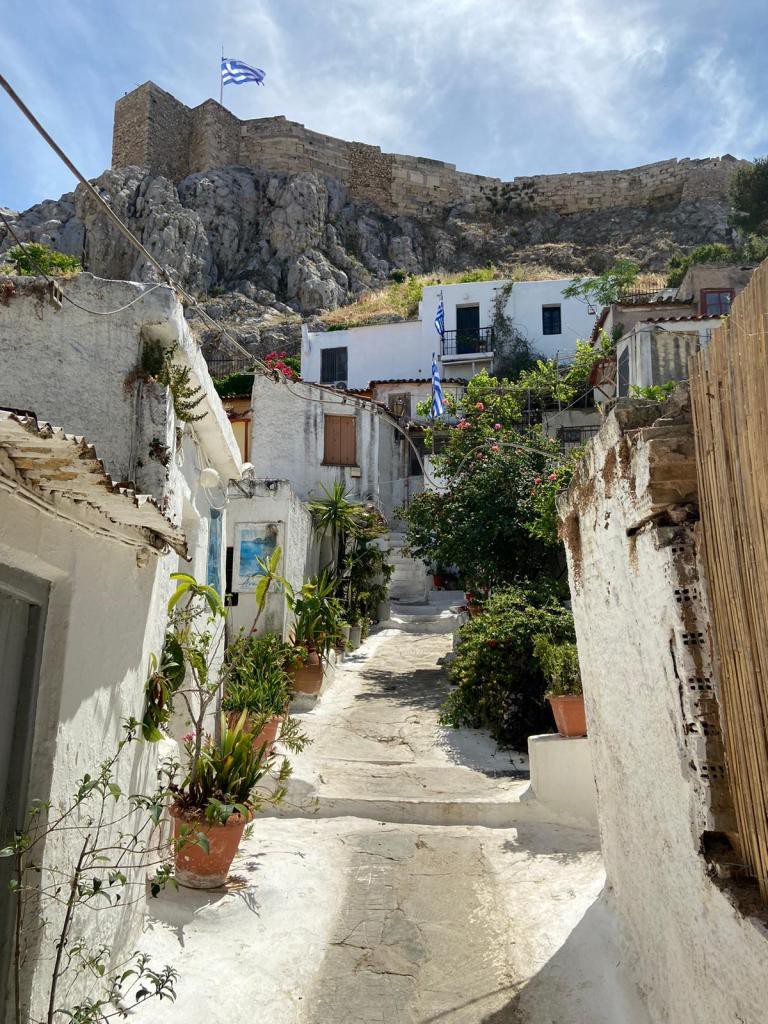
2. Visit the Acropolis
Arguably one of Athens’ top attractions, the Acropolis Museum is home to several significant relics from its namesake site: marble sculptures and parts of buildings that have stood on Acropolis for thousands of years. The museum also hosts rotating exhibits and has an outdoor terrace. You can visit as part of an Acropolis ticket, which includes entry into other sites around town, or as part of a regular museum ticket.
Definitely one of the best historical spots in the city, Acropolis of Athens.The greek pride, the symbol of power of Athens, the parthenon is still astounding and breathtaking. If you are in love with museum, and archaeological sites, visit Athens during the month of may. Preferably book your trip to Athens on the week of 18 may. Why so? Because on 18 may is the international museum day, the entrances are all-free. The initial price to buy your pass for all site is about 20€. Get there early or before the sunset to avoid the crowds.
 Acropolis Ticket Cost: €20 April 1 to October 31; €10 November 1 to March 31
Acropolis Ticket Cost: €20 April 1 to October 31; €10 November 1 to March 313. Hike Mount Lycabettus
One of my favorite areas of Athens is Lycabettus Hill. It’s an easy, 15-minute walk from Syntagma Square and offers amazing views of both Athens and Mount Lycabettus. To get there, you can take a city bus or taxi up for about 2 Euros. The path is paved and well lit at night, but it can be busy on weekends as it offers one of best views of Acropolis. The steps up offer great exercise and you’ll be rewarded with fantastic views once you reach the top!
So, if you enjoy some exercise and a great view of the city with a colourful sunset, Mount Lycabettus is the right spot for you. Standing 277 meters above sea level, Lycabettus Hill is the highest point of Athens. There is no fee for the entrance, its Free. This spot must be in your Athens travel guide.
 Getting Here: Unless you take a taxi right to the Lycabettus Cable Car station, expect to do some walking, and a lot of that will be uphill. The closest metro stops are Panepistimio and Evangelismos. From here, it will be an uphill walk to the cable car station. Or, you can choose to walk all of the way to the top on a paved trail that switchbacks its way up the hill. It’s about a 15-minute walk up this paved trail to the summit.
Getting Here: Unless you take a taxi right to the Lycabettus Cable Car station, expect to do some walking, and a lot of that will be uphill. The closest metro stops are Panepistimio and Evangelismos. From here, it will be an uphill walk to the cable car station. Or, you can choose to walk all of the way to the top on a paved trail that switchbacks its way up the hill. It’s about a 15-minute walk up this paved trail to the summit.
4. Explore the beaches on the south coast
Rent a car and drive the south coast, there are plenty of beaches were you can swim, relax and enjoy amazing sunset. The south coast is the best plan if you have more time and want to escape the city; most of the beaches on the south coast are good for swimming. I recommend you Sounion beach, vouliagmeni beach, and bolivar beach.


Other Things to See and Do in Athens
Visit the Temple of Poseidon at Cape Sounion

If you only have time for one thing, make it Sounion Cape. The Greek gods were said to meet here during times of peace, which explains why Poseidon’s sanctuary was erected on an island and not mainland Greece. In addition to its mythological significance, Sounion is also home to some of Greece’s most stunning beaches and swimming spots. If your travel dates fall between June 1 and September 30, you’ll likely be able to enjoy some phenomenal snorkeling in addition to sunbathing.
The Temple of Poseidon is a wonderfully preserved, constructed in 444BCE. It takes an hour from Athens to get to the site. The admission fee is 10€. You can enjoy an incredible sunset. Also you can visit some nice beaches near the temple of Poseidon such as Legrena.
Visit the Acropolis Museum

The Acropolis Museum has been rated as one of the best museums in the world. It is recommended to start the visit of the museum from the top floor and make your way down.
Cost: €15 April 1 to October 31; €10 November 1 to March 31
Hours: The Acropolis Museum is open daily. Hours vary by season. From April 1 to October 31, the museum opens at 9 am and closes between 5 pm and 10 pm, depending on the day of the week.
Website: For updated hours, pricing, and holidays, and to purchase your tickets in advance, visit the official website.
Visit the Agora-Athens Central Market
Get the opportunity to visit the Ancient Agora of Athens which is situated between Monastiraki and the Acropolis. Come early to discover the secrets of Greek gastronomic tradition, like halloumi, feta, olives and many more.
Ancient Agora of Athens

The Ancient Agora of Athens, one of three ancient city agoras in Greece, is located directly south of Syntagma Square in downtown Athens. The entire surrounding area, which is commonly called The Plaka, is now a pedestrian zone. The modern Athinas street was built in place of Themistocles wall and extends from Pandrossou Street until Capodistrias Street. It corresponds today to a length of 10 kilometers or 6 miles and contains 100 streets. The street names honor famous Greeks (both contemporary and historic) such as Aeschylus, Aristotle, Euripides and Sophocles in addition to ancient cities like Corinth and Epidaurus.
The Temple of Olympian Zeus

This massive temple is, not surprisingly, dedicated to Zeus. Construction began in 520 B.C., and it wasn’t finished until more than 100 years later. In fact, no one was quite sure how big it should be, so they just kept building until everyone was happy with what they had created! Today, all that remains of Temple of Olympian Zeus is a few columns and some steps leading up to them. It’s impressive nonetheless; don’t miss your chance to explore it during your next trip to Athens.
National Archaeological Museum of Athens

The National Archaeological Museum of Athens (Greek: Εθνικό Αρχαιολογικό Μουσείο, Ethnikó Archaiologikó Mouseío) is an archaeological museum in Athens, Greece. It was founded by royal charter on May 10, 1829. Its first curator was Adamantios Korais. The museum initially focused on relics from Athenian and Greek history from around 700 BC to AD 300, including some objects from excavations at Troy. By 1865 it had moved into its present building on Syngrou Avenue; its interior has been altered more than once since then.[2]
Hadrian’s Library, Roman Forum and Odeon

Skip museums and historical sites when in Athens. Instead, head straight for Hadrian’s Library. The Roman Forum was added in 86 AD by emperor Domitian and even though it is just ruins, it will give you a great feel for what ancient Rome was like. The Odeon dates back to 160 BC and is one of only 5 left in Greece. Even with some careful restoration, these ruins still have a very authentic feeling that you won’t get at any museum. When most people think of traveling to Greece they think of walking around ancient ruins so be sure not miss out on these three must-see landmarks while there! Be sure to check out TripAdvisor reviews before booking your flight – those travelers know their stuff!
Kerameikos – cemetery, tombs and ancient baths
The Kerameikos was an ancient cemetery, containing many impressive tombs and funerary monuments. The site is on Pireos Street in central Athens , although most of it lies beneath modern buildings. The complex dates from 2700 BC to 300 AD, with an interruption during Roman times. The large tumulus tomb at the center of site is that of Aristion, one of many Athenians buried here as they were denied access to other public cemeteries following changes in burial law due to pestilence in 430 BC.
Temple of Hephaestus in Ancient Agora & Stoa of Attalos by Athenian Agora
The Temple of Hephaestus, dedicated to Hephaestus, god of fire and blacksmiths, is a fine example of Doric architecture in Athens. Built in 449 BC at the Ancient Agora, it was moved from its original location in 1871. Today, it houses an archaeological museum with many great artifacts from excavations around ancient Athens. The Stoa of Attalos was built on Agora Hill in 159 BC by King Attalos II of Pergamon who had just won three wars against Eumenes II and Mithridates VI. It is named after King Attalos III, who added some more porticos with sculptures (including four horses made by Praxiteles) as well as his name and works on some friezes.
Kerameikos – burial site of ancient heroes
When you visit Kerameikos, you will walk through one of ancient Greece’s most important burial sites. The site is almost entirely intact and has not been significantly excavated since ancient times, making it a key piece of history that must be seen. If possible, check out Kerameikos while it’s still light out; there is no shade and it can get very hot and crowded later in the day. Wear comfortable shoes for walking, as well as sunscreen and water for hydration.
GETTING AROUND ATHENS
Getting around Athens is relatively easy due to its well-developed transportation system. Here are the primary modes of transportation you can use in Athens:
-
Metro: The Athens Metro is a fast and efficient way to navigate the city. It has three lines (red, blue, and green) that cover a large part of the urban area, including major attractions. The metro operates from approximately 5:30 am until midnight, with extended hours on weekends.
-
Buses: Athens has an extensive bus network that covers the entire city, including the suburbs. Buses operate from early morning until midnight, and some routes run 24 hours. It’s a convenient option for reaching destinations not served by the metro.
-
Trams: The tram network in Athens connects the city center with the coastal suburbs. It’s a scenic way to travel along the coastline, offering beautiful views of the sea. Trams operate from early morning until midnight.
-
Taxis: Taxis are widely available in Athens and can be hailed on the street or found at designated taxi ranks. They are typically yellow and have a “TAXI” sign on the roof. Make sure the meter is running during your journey, and it’s advisable to ask for an estimated fare before starting your trip.
-
Suburban Railway: The suburban railway connects Athens with various suburbs and extends to the Athens International Airport. It’s a convenient option for reaching destinations outside the city center.
-
Car Rental: Renting a car can provide flexibility if you plan to explore areas outside Athens. However, be aware that traffic in the city center can be congested, and parking can be challenging to find. Consider parking your car at a metro station and using public transportation to explore the city.
-
Walking: Athens is a walkable city, especially in the central areas where many attractions are located. Exploring on foot allows you to soak in the atmosphere, discover hidden gems, and enjoy the vibrant neighborhoods.
It’s worth noting that the Athens Transport Ticket (called “Ath.ena Ticket”) provides unlimited travel on various modes of public transportation within a specific time frame and is a convenient option for tourists.
Backpacking Athens Budgets
Your budget daily will depends mostly on your lifestyle, your travel style on what you looking for in visiting Athens. If you’re backpacking Greece, I would say you might spend around 35€ per day, by:
- Hostel/ dorm A bed in a dorm with 8 beds is around 10€ per night
- Eat local/cook Average cost of food — You can find gyros or souvlaki for 2–4€; a hearty Greek salad costs about 5–8 EUR.
- Dinner/ Lunch Recommendation: If you looking for local food, ask the local, I have learn that in Indonesia. Ask some of the shop owners where they like to eat; you will get authentic food from the country and local price. Be sure to try a traditional Greek salad and Gyro Pita! It’s affordable, tasty and you can find them on every corner!
- Take a free walking tour — There is no better way to learn and understand some history about Athens.
- Public transportation : The best way to get around is by metro, tram and bus. Tickets cost 1.20€ and are valid for 90 minutes. One-day unlimited pass is 4.10€. The bus from the airport to the city is about 5.50€ and 9€ by metro and it will take you about an hour from the airport to the city center.
- Taxi : I didn’t use taxi in Athens because the prices can rise quickly. I would recommend you to skip the taxis. Uber is available in Athens and it could be a better option.
- Car rental : Car rentals is not too expensive, between 10–15€ per day. I highly recommended to rent a car if you are willing to explore the south coast and the surrounding neighbour.
When to Go to Athens
Greece is a popular destination especially during summer. Greece has a hot summer, temperature can climb up to 30s°C. It could be unpleasant to walk down the streets of Athens with that kind of weather, expect if you are visiting islands and willing to enjoy the Mediterranean vibes.
From my experience, the best season to visit Athens is (April – May and end of September – October). The touristic spots are less crowded compare during the summer. The prices are a bit cheaper as well during the month of may. You can also access all museum and archaeological site for free (18 may international day of museum). The weather is much pleasant between spring and summer.
Hope this Travel Athens guide will give you a nice overview of the best things to do in Athens.



